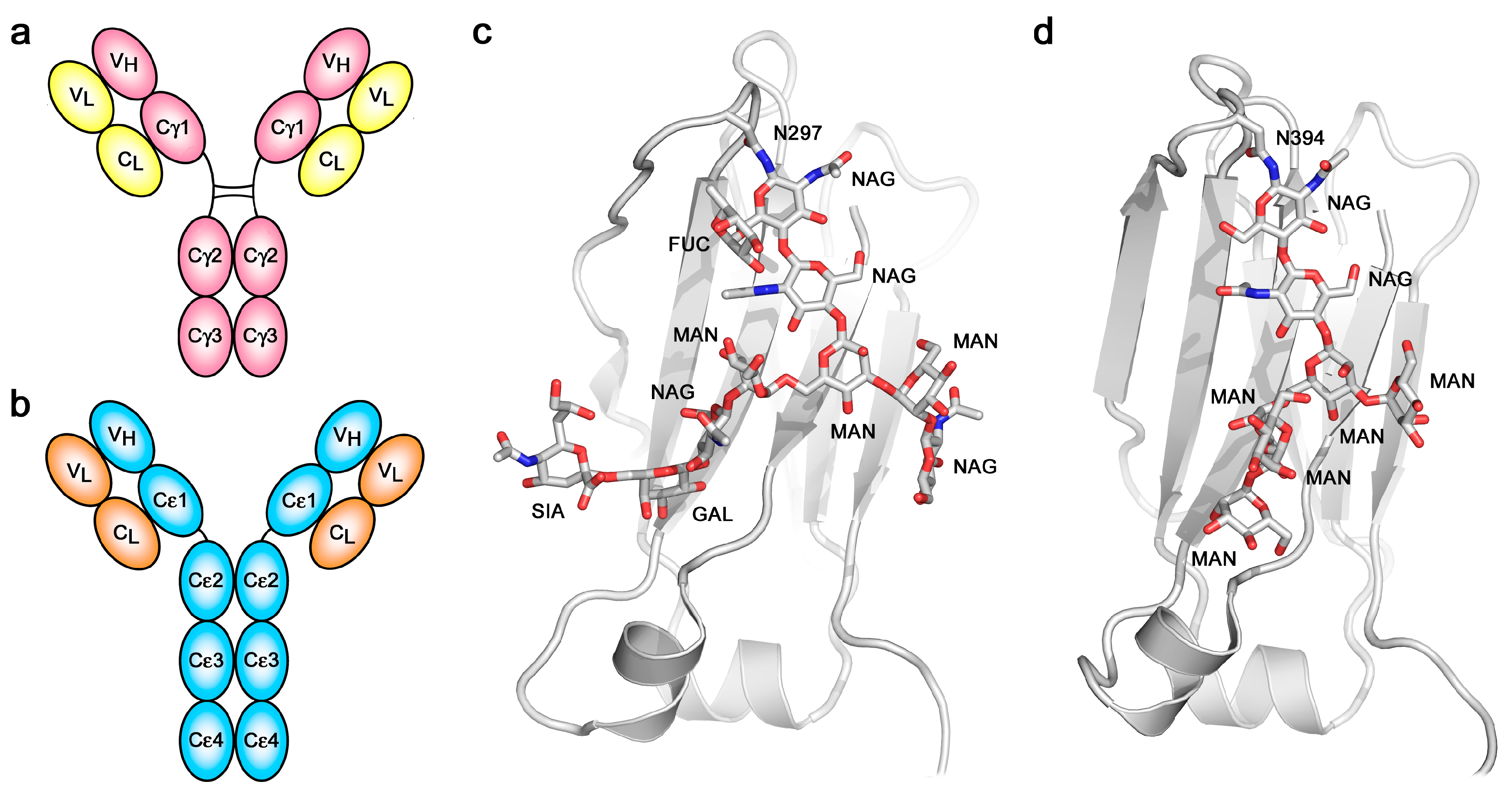IgE is produced by plasma cells located in lymph nodes draining the site of antigen entry or locally, at the sites of allergic reactions, by plasma cells derived from germinal centers developing within the inflamed tissue. IgE differs from other antibody isotypes in being located predominantly in tissues, where it is tightly bound to the mast-cell surface through the high-affinity IgE receptor known as FcεRI. Binding of antigen to IgE cross-links these receptors and this causes the release of chemical mediators from the mast cells, which may lead to the development of a type I hypersensitivity reaction. Basophils and activated eosinophils also express can FcεRI. They can therefore display surface-bound IgE and also take part in the production of type I hypersensitivity reactions. The factors that lead to an antibody response dominated by IgE are still being worked out.
How IgE protein looks: These are typical protein diagrams.
